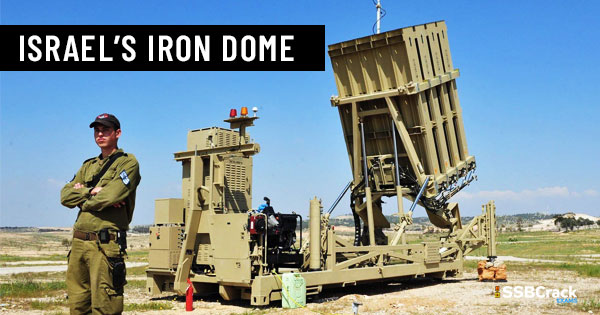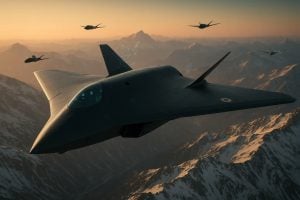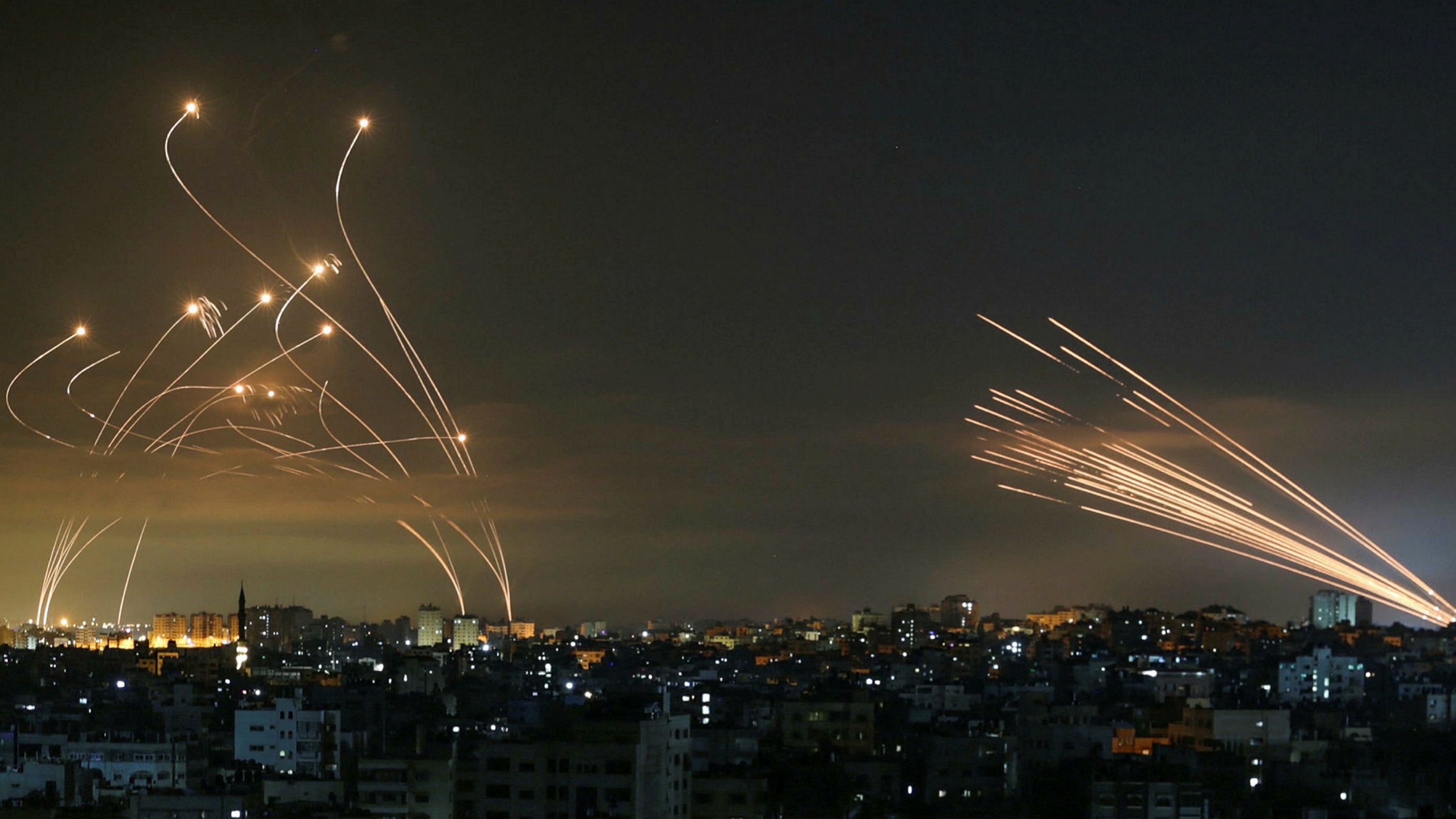
The ongoing conflict between Israel and Hamas has caused worldwide concerns with countries taking sides. The USA openly supported the stance of Israel in striking enemy targets lying deep in the civilian areas saying Israel has all rights to defend itself. The Prime Minister of Israel Benjamin Netanyahu also shared a thank you post for all the nations which came to support it and India was not on the list because India by that time had given no official statement.

Yesterday India also gave subtle support in UNSC meet regarding Israel Palestine and I quote the statement “We condemn the terror attacks on Israel by Gaza and their indiscriminate rocket launch targetting Israeli civilians.” India also urged restrain from both sides.

This conflict has showcased some of the amazing defence arsenals of Israel and their superior military ability. There are visuals of the Israeli Iron Dome Air Defence system storming the internet with its ability to continuously intercepting rockets fired from Gaza. Over the years, the State of Israel has developed a doctrine for defence against high trajectory weapons, of which rocket fire is one type.
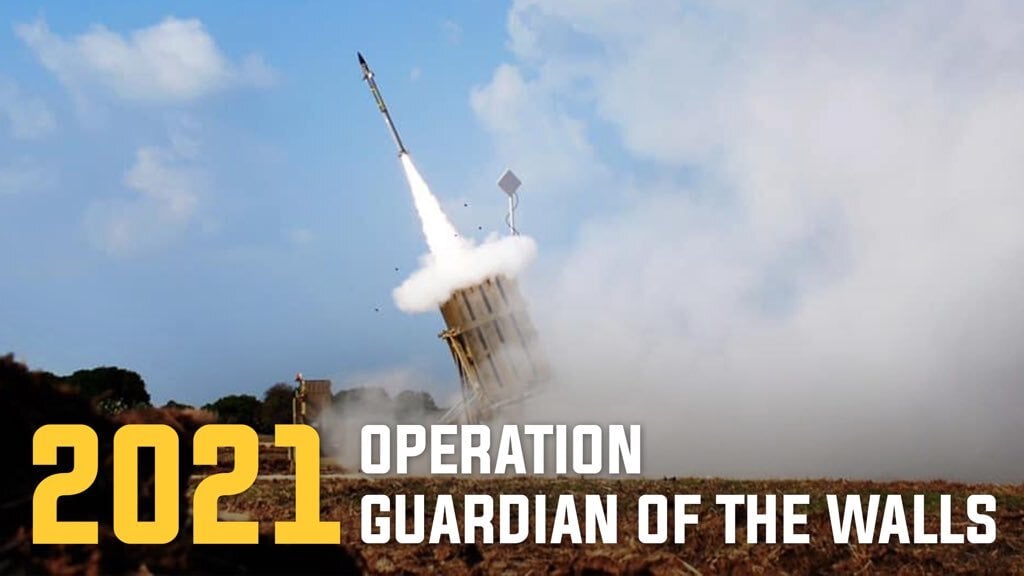
This doctrine is based on layers of defence, from passive defence to active defence – involving the interception of rockets and missiles by the Iron Dome system, David’s Sling (in development), the Arrow 2, and the Arrow 3 to offence against launchers on their bases.
IRON DOME AIR DEFENCE SYSTEM :
Iron Dome is a multi-mission system that is capable of intercepting Precision Guided Munitions like very short-range air defence (V-SHORAD), rockets, artillery, mortars as well as aircraft, helicopters and Unmanned Aerial Vehicles (UAV) over short ranges of up to 70 km.
Development: It was developed by Rafael Advanced Defense Systems in cooperation with Elta Systems, which produces the radar, and mPrest, which is responsible for the command and control system.

Need for Development: Israel has been under rocket attack for many years of which the most famous are the shelling of Galilee panhandle towns in the 1970s, the Second Lebanon War in 2006, when Israel suffered over 4,000 rocket attacks in one month, and the ongoing rocket fire from the Gaza Strip over the past decade, these constant threats were perceived by the military officials of Israel and thus to strengthen the air defence these systems were developed in a limited period of 5 years beginning from 2005 and the first battery was delivered to Israel in the year 2011.
Components of the system: A single unit of Iron dome defence system has the following components:
1. A radar system
2. A battle management and weapon control centre
3. Three launchers
4. 60 Interceptor missiles: each launcher has 20 interceptor missiles.

Functions of each component:
1. The radar system continuously tracks any unidentified aerial entry in the range, as soon as the contact is established, the alert is sent to the command centre.
2. The battle management and weapon control centre gathers the information and integrated calculations are made according to the available data, the launchers in the proximity of the range of rockets are also activated.
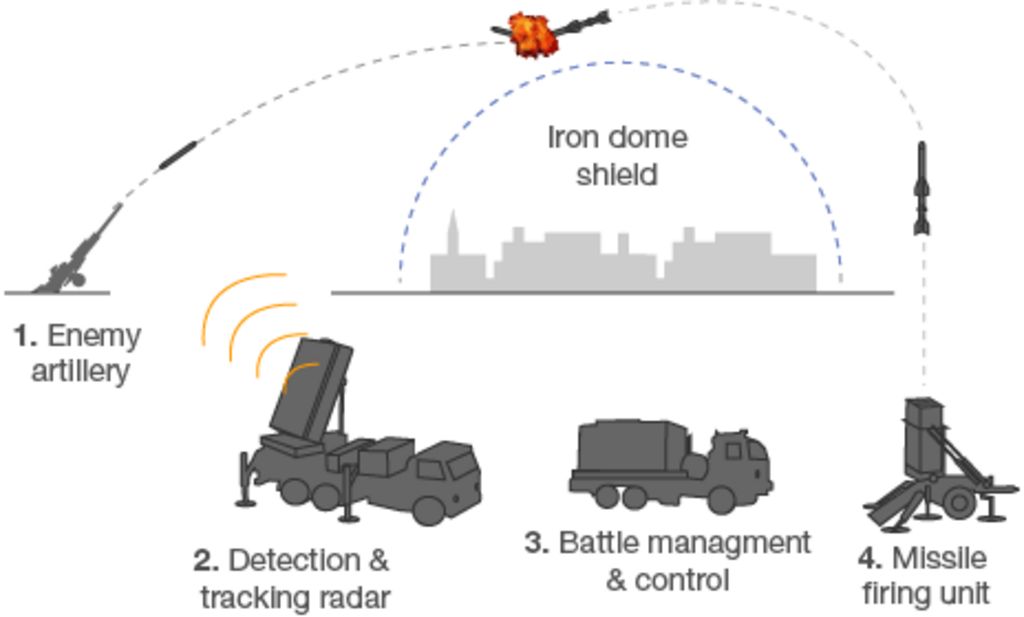
3. The launchers are of vertical types and on activation, they start launching interceptor missiles.
4. Interceptor missiles work on fuse detonation technology and as soon as they establish contact with an enemy rocket, they destroy it in the air.

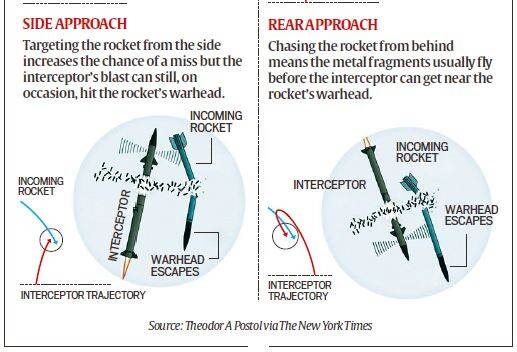
Peculiar feature: One of the system’s peculiar feature is its ability to identify the anticipated point of impact of the threatening rocket, to calculate whether it will fall in a built-up area or not, and to decide on this basis whether or not to engage it. This prevents unnecessary interception of rockets that will fall in open areas and thus not cause damage.
Other advantages:
Rafael, the company which is the developer of the air defence system claims the following advantages:
1. Combat proven with over 4000 successful interceptions.
2. The interception rate is 90% as claimed by Rafael, but other experts say it is around 80%.
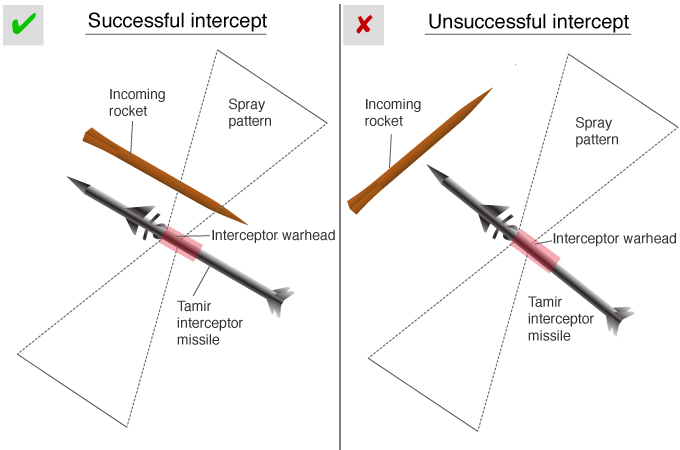
3. Multi-mission system based on common building blocks.
4. Protects population, strategy and assets to reduce collateral damage.
5. Proven effectiveness against concentrated salvos and challenging scenarios.
6. Adaptable to a rapidly evolving threat set.
7. The system is suited to operate in day/night and all weather conditions.
8. The integration of launcher system with multiple radar and detection system.
Deployment: The Iron Dome is deployed in a layered defence along with David’s Sling and Arrow missile defence system which are designed for medium- and long-range threats.
Cost of Iron Dome Air Defence system: Each battery, or the full unit, can cost over $50 million, and one interceptor Tamir missile costs around $80,000. In contrast, a rocket can cost less than $1,000. The system dispatches two Tamir missiles to intercept each rocket.
C-Dome system: C-dome is based on the Iron-Dome system. It protects ships and other sea-based strategic assets from modern naval threats. C-Dome uses the iron-dome interceptor, a vertical launcher, components from the Iron-dome battle management centre and the ship’s surveillance radar. C-Dome provides simultaneous multiple targets engagement capability with unrestricted 360° azimuth coverage.
Criticisms of the Iron dome defence :
1. The system has a saturation point and when a barrage of rockets is fired, it may be unable to deal with it. When rockets are fired in crowded salvo they can breach the air defence system.
2. It is designed to deal with certain projectiles over which if the projectile angle is changed rockets may breach the system.
3. The cost is considered high as compared to other alternatives but few experts consider that the cost-effectiveness should be studied with the numbers of lives saved.
What does India have when it comes to the Air Defence system?
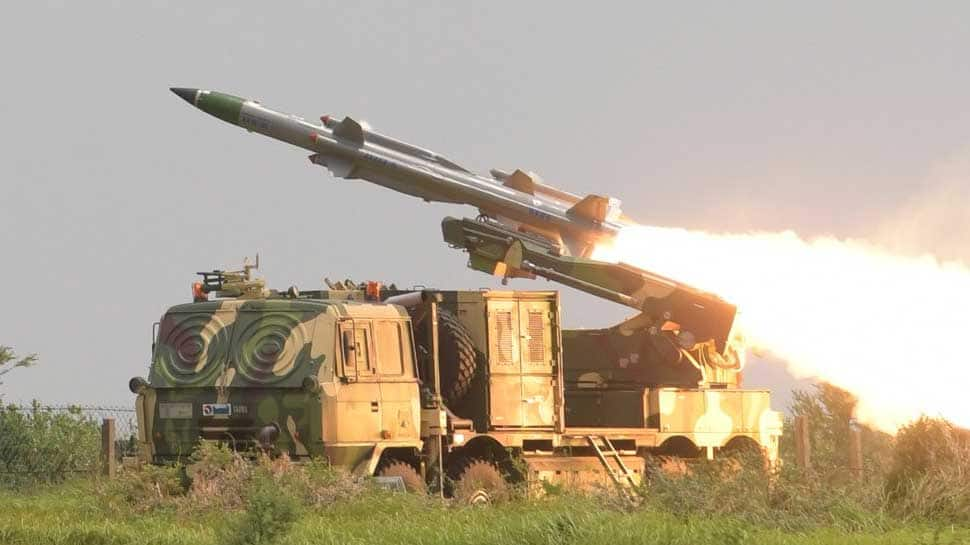
India has procured various air defence systems to secure its border against hostile neighbours such as China, and Pakistan. These systems have been deployed actively in the border regions and can be divided into the following components.
Long Range interception: Indian Ballistic Missile Defence Programme
Intermediate Interception: S-400 Triumph (future induction)
Short Range interception: Akash Air Defense System and Similar Systems
Very Short-range interception: MANPADS and Anti- Aircraft Guns.
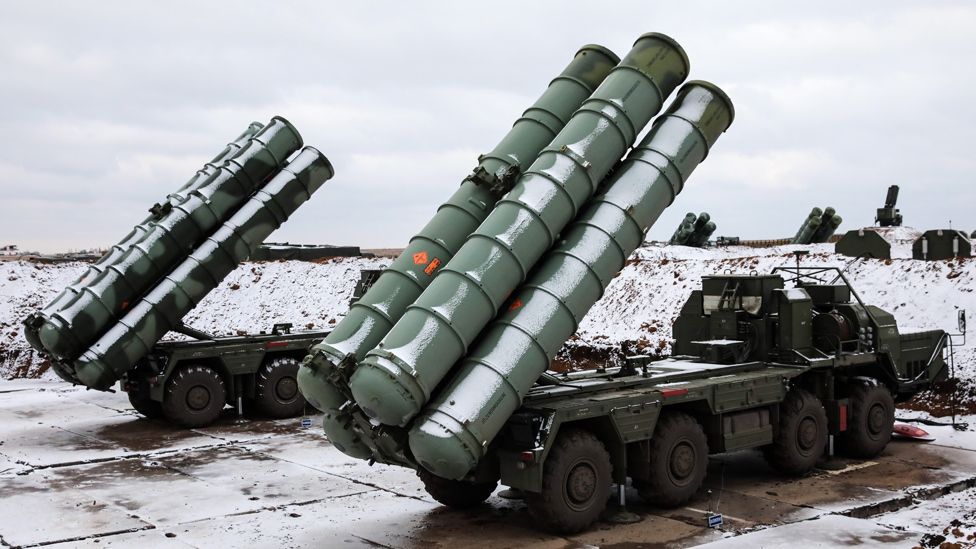
We will be covering each of the Air defence system in details in the upcoming articles. Stay tuned in and subscribe for early notifications of upcoming articles.
